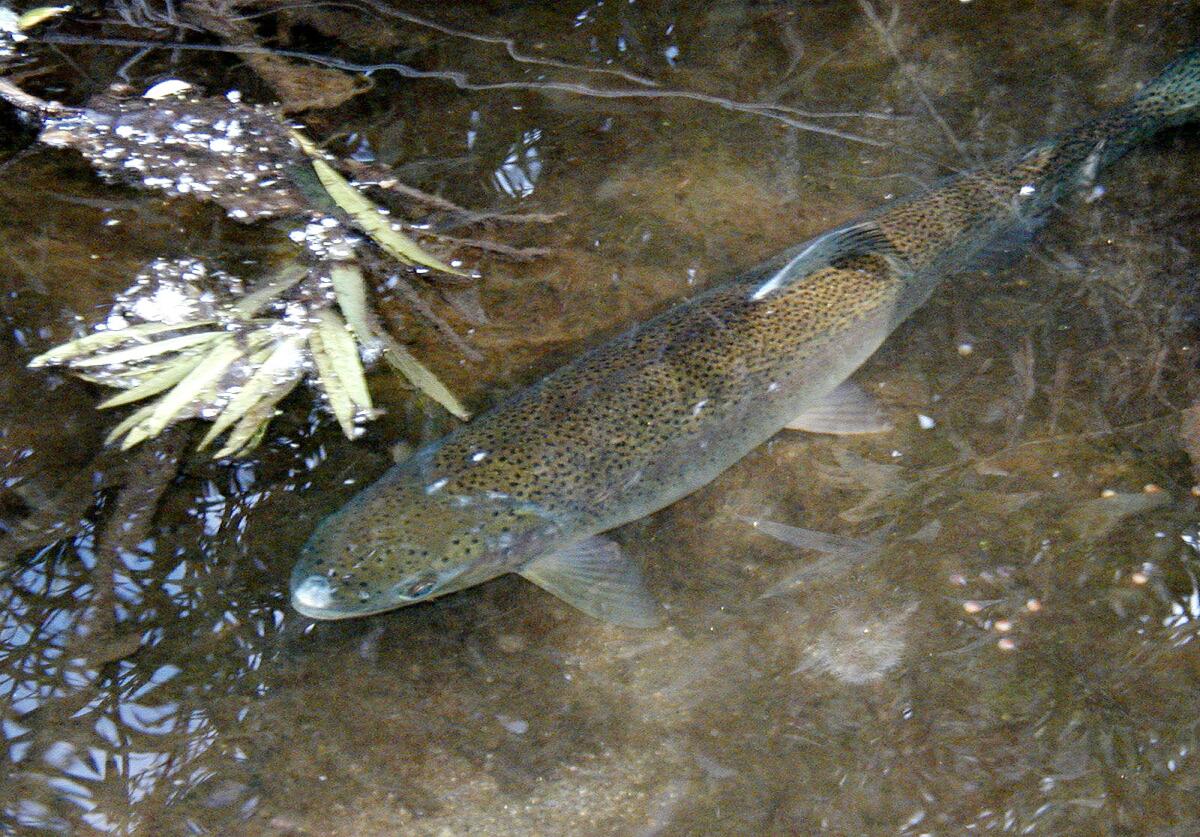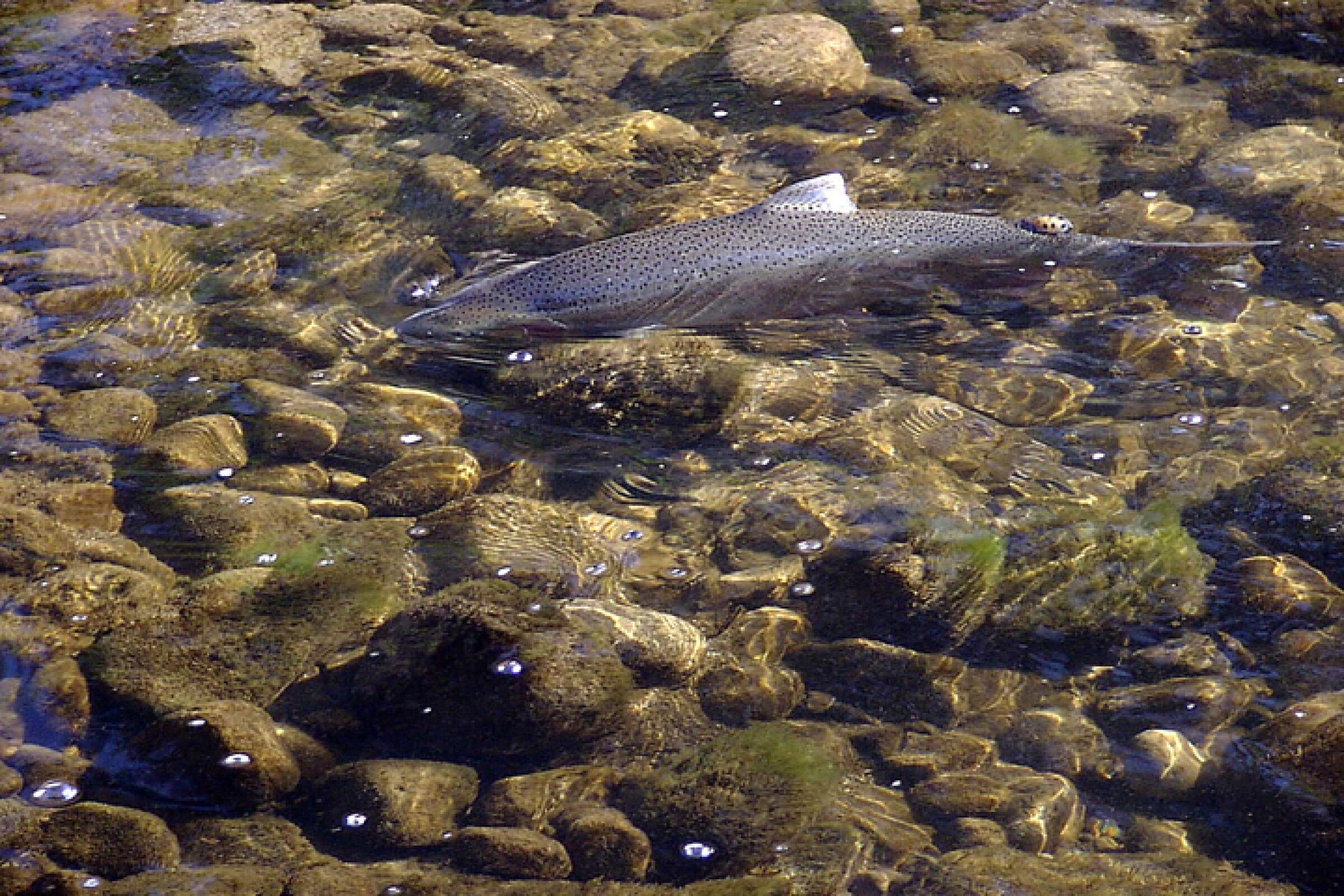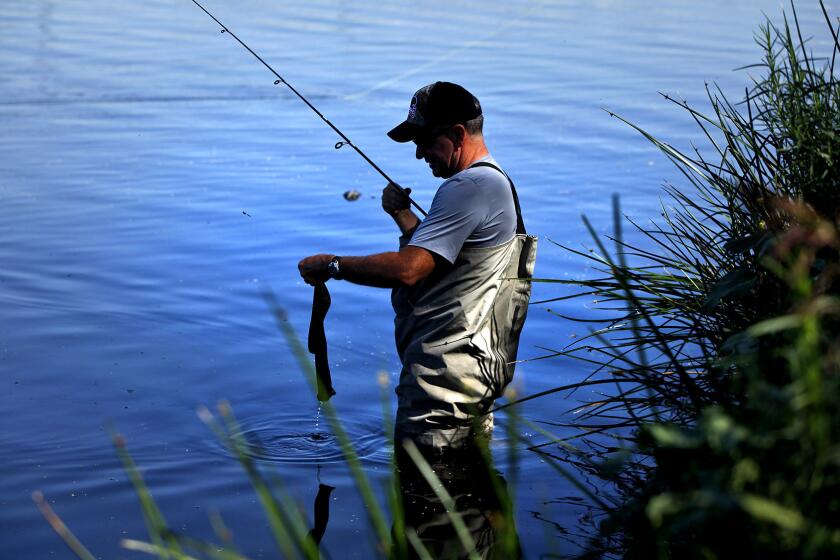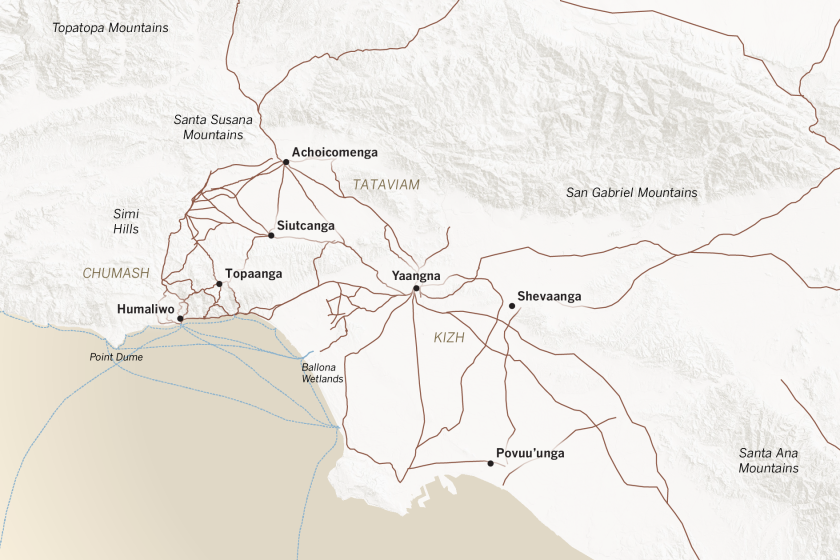Ian James is a reporter who focuses on water and climate change in California and the West. Before joining the Los Angeles Times in 2021, he was an environment reporter at the Arizona Republic and the Desert Sun. He previously worked for the Associated Press as a correspondent in the Caribbean and as bureau chief in Venezuela. Follow him on Bluesky @ianjames.bsky.social and on X @ByIanJames.
1
Southern California’s rivers and creeks once teemed with large, silvery fish that arrived from the ocean and swam upstream to spawn. But today, these fish are seldom seen.
Southern California steelhead trout have been pushed to the brink of extinction as their river habitats have been altered by development and fragmented by barriers and dams.
Their numbers have been declining for decades, and last week California’s Fish and Game Commission voted to list Southern California steelhead trout as endangered.
Conservation advocates said they hope the designation will accelerate efforts to save the fish and the aquatic ecosystems on which they depend.
“Historically, tens of thousands of these fish swam in Southern California rivers and streams,” said Sandra Jacobson, director of the South Coast region for California Trout, an organization that advocated for the listing.
Aggressive and impactful reporting on climate change, the environment, health and science.
“Their numbers have dipped dangerously low due to impacts from habitat loss, fragmentation and urbanization,” Jacobson said. “This landmark decision provides critically important protections for this iconic species.”
The distinct Southern California population is one of eight varieties of steelhead trout in the state. They live in coastal waters and rivers from southern San Luis Obispo County to around the U.S.-Mexico border.
Steelhead trout are the same species as rainbow trout, Oncorhynchus mykiss, but unlike their freshwater-dwelling relatives, steelheads spend much of their lives feeding in the ocean and return to their natal streams to spawn.
Steelheads typically grow to 2 or 3 feet and sometimes larger.

An adult steelhead trout in San Luis Rey River in northern San Diego County.
(California Department of Fish and Game)
The fish migrate upstream when winter and spring rains send high flows coursing through rivers and creeks. They travel to spawning habitats as far as 30 miles inland — as long as they don’t encounter a barrier along the way.
Unlike salmon, which are part of the same family, steelheads often spawn multiple times before they die.
Southern California steelheads were once caught by Indigenous people. In the early 20th century, anglers found that the fish were abundant in the Ventura and other rivers.
But over the past century, the Los Angeles River and other waterways were lined with concrete. Coastal marshes were hemmed in by development, and barriers and dams fragmented streams.
The Southern California steelhead population was declared endangered by the federal government in 1997. Reviews by federal and state agencies have found that the population has continued to suffer since then.
“The negative trend toward extinction has not reversed,” Jacobson said.
In a 2020 study, researchers found that there had been only 177 documented sightings of Southern California steelhead in the previous 25 years.
California Trout submitted a petition in 2021 urging the state to list the steelhead population as endangered.
Small numbers of fish continue to return to the Santa Clara and Santa Ynez rivers, as well as Malibu Creek, Topanga Creek and other streams from Santa Barbara to San Diego County.
On a recent sweltering weekday morning, environmental scientist Rosi Dagit waded into the murky water at the mouth of the Los Angeles River.
Jacobson and other conservationists have been advocating for accelerating plans to remove obsolete dams that block fish, including Matilija Dam in the Ventura River watershed and Rindge Dam in the Malibu Creek canyon. They’ve also been seeking to expedite the removal of barriers on Trabuco Creek and the Santa Margarita River.
Other efforts to help steelhead trout include removing non-native species, reducing water diversions and groundwater pumping to ensure sufficient flows in streams and restoring watersheds’ natural ecosystems, Jacobson said.
“Southern steelhead are crucial indicators of watershed health,” Jacobson said.
She said restoring the “aquatic highways” the fish use to reach their spawning habitats will also bring benefits for people, including safeguarding sources of clean drinking water.
“I am hopeful for steelhead recovery,” Jacobson said. California’s classification of the population as endangered, she said, will help advance a state conservation plan and add urgency to the work of removing barriers in rivers.
Our oceans. Our public lands. Our future.
Get Boiling Point, our new newsletter exploring climate change and the environment, and become part of the conversation — and the solution.
You may occasionally receive promotional content from the Los Angeles Times.
The steelhead trout that remain in Southern California face other threats, including warmer waters and more intense droughts and wildfires as a result of climate change.
“These are populations that are experiencing the warmest conditions, really on the leading edge of climate change effects. And then you layer on top of that just how densely populated Southern California is,” said Andrew Rypel, a professor of fish ecology and director of UC Davis’ Center for Watershed Sciences. “All of these steelhead streams in Southern California are extremely impacted.”
He said that with so many factors weighing against the steelhead trout, the additional protections could make a significant difference.
“It’s like the most challenging fish conservation issue I can imagine,” Rypel said. “How do you manage a whole landscape for fish conservation in the middle of one of the biggest urban areas in the world? It’s very challenging.”
This population of steelhead, he said, is effectively “up against the clock.”
Removal of barriers to spawning areas is key, he said.
“It’s a really cool fish. It’s a Southern California fish, and it’s up to the people of that region to watch out for it and to ensure that future generations are going to be able to watch this cool fish and protect it — and by way of doing that, protect the ecosystem.”
The ‘Mapping Los Angeles Landscape History’ project seeks to illustrate major Los Angeles-area Indigenous settlements.








